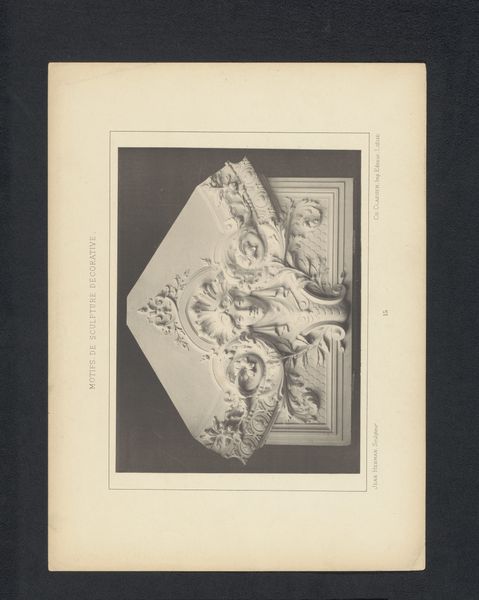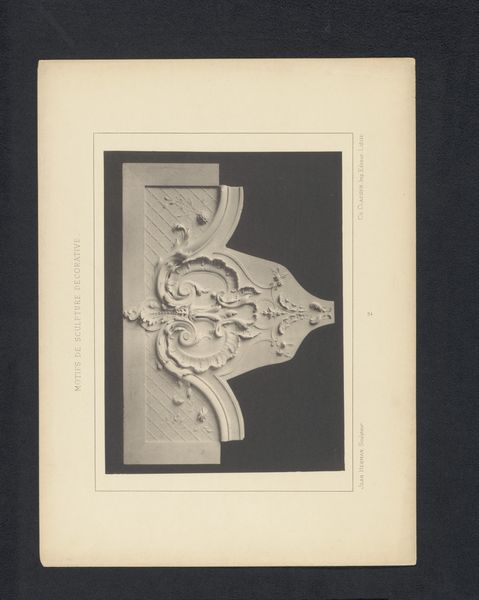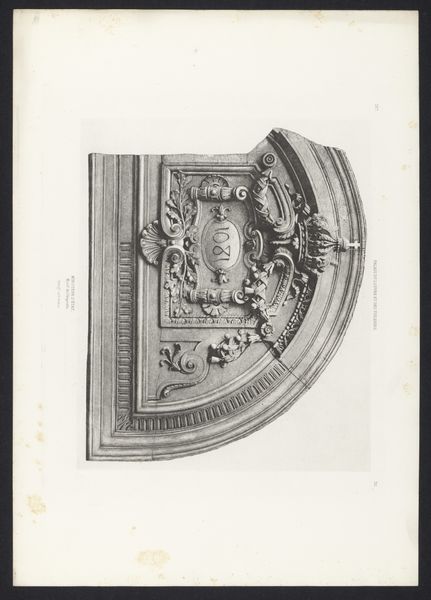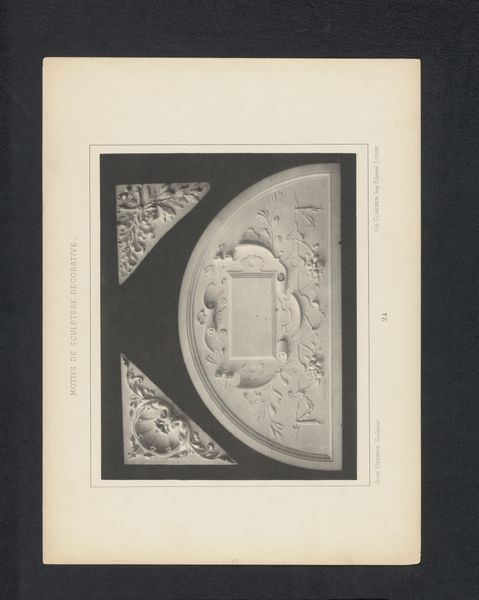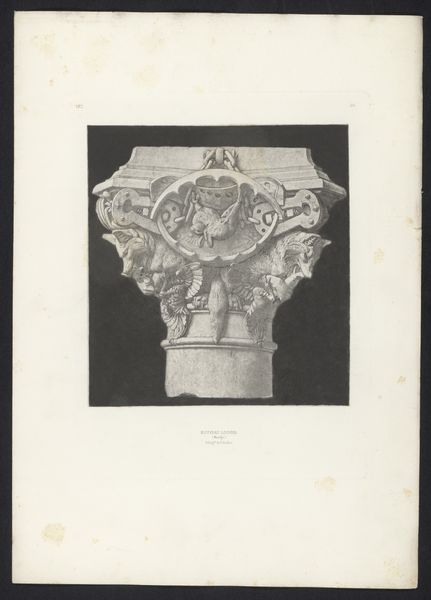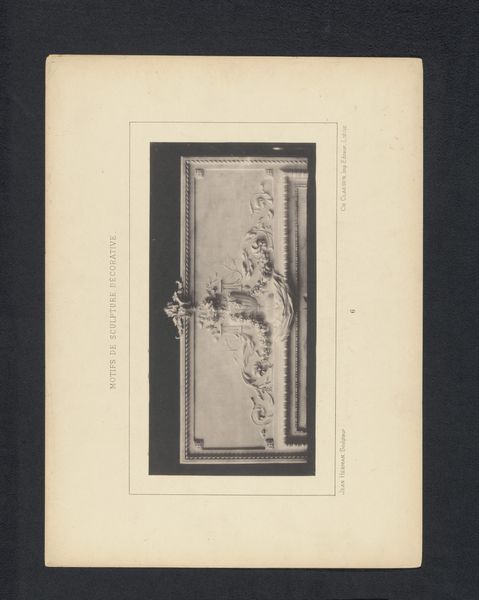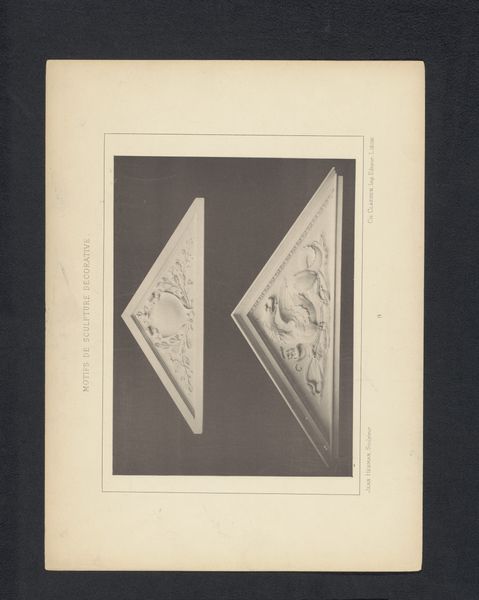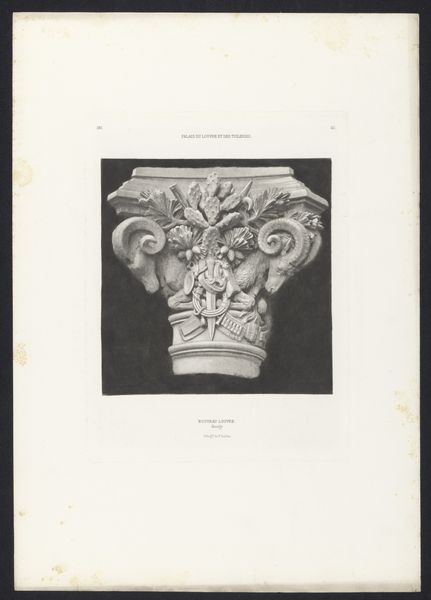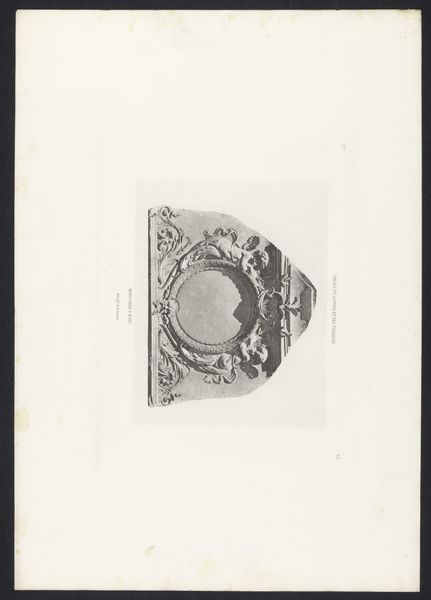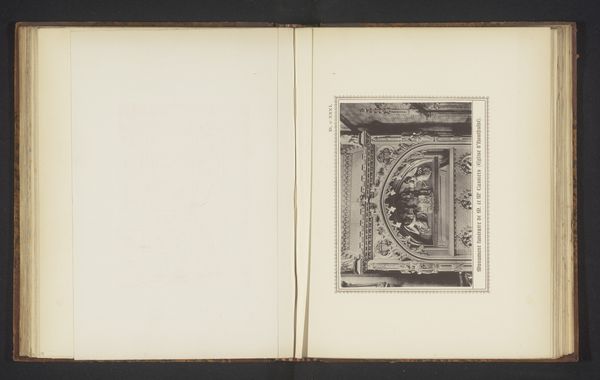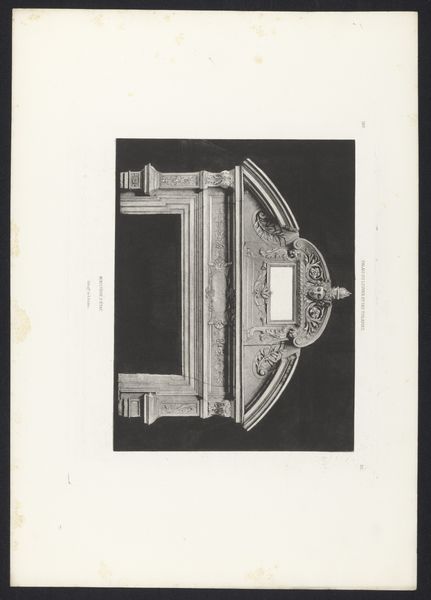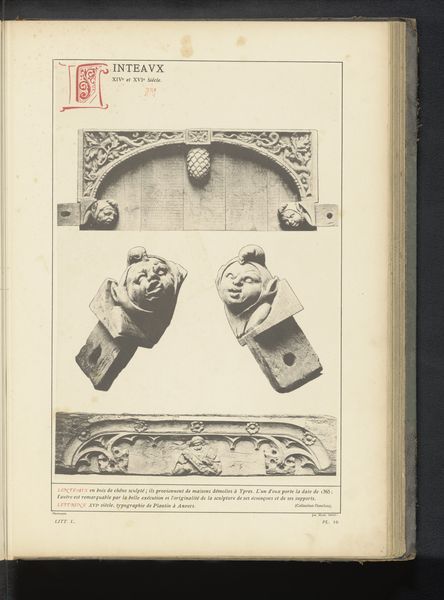
Dimensions: height 179 mm, width 259 mm
Copyright: Rijks Museum: Open Domain
Editor: This is a photograph of a relief with leaf tendrils, sculpted by Jean Herman before 1880. The incredible detail is immediately striking! How would you interpret this kind of decorative work within the broader artistic landscape of the time? Curator: It's important to consider Neoclassicism, which greatly influenced the decorative arts during this period. Jean Herman’s work embodies the movement's focus on formal elements borrowed from classical antiquity. These weren't simply aesthetic choices, but assertions of power and refinement by the patrons who commissioned such work. Do you notice how the foliate forms aren’t simply naturalistic? Editor: Yes, they seem quite stylized. Is this stylization also tied to the socio-political context? Curator: Absolutely. Think of the context of museums and exhibitions in that period. Decorative arts displays aimed to elevate crafts to the level of "high art," legitimizing both the objects and the social class they represented. Leaf tendrils are abstracted, ordered into repetitive motifs that echo patterns found on Roman friezes or cornices. That connection lends the patron prestige. What does that suggest about who the patron for this relief was? Editor: Likely someone aiming for a connection with historical greatness and sophistication, looking to create an atmosphere of prestige. This decorative piece really speaks volumes about class and power when you start considering its role beyond its surface. Thanks for highlighting the institutional influences in place at the time! Curator: My pleasure. Understanding these forces really enriches our view.
Comments
No comments
Be the first to comment and join the conversation on the ultimate creative platform.
